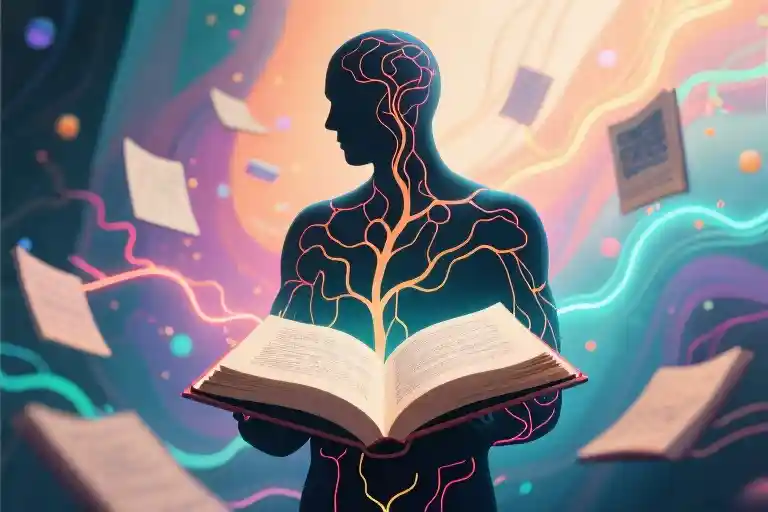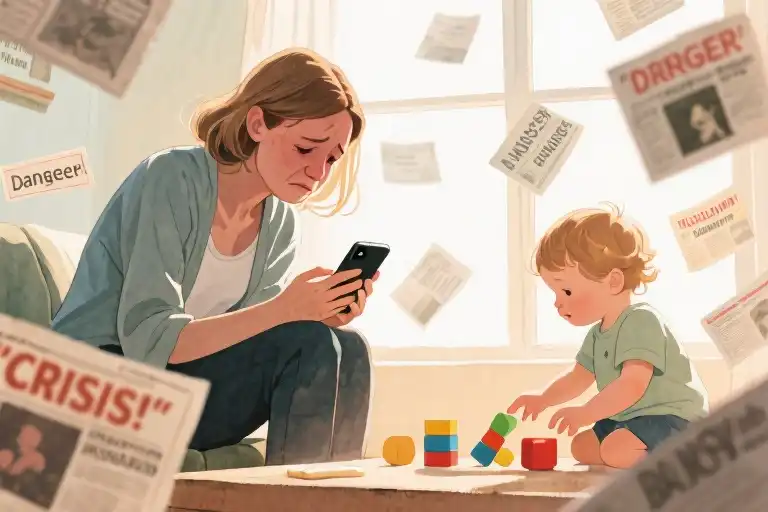There’s a peculiar moment when you finish the latest episode of Game of Thrones – you know it’s fiction, every castle and dragon meticulously crafted by production teams, yet your palms sweat during Tyrion’s trial, your chest tightens when the Stark children scatter across Westeros. This cognitive dissonance isn’t accidental; it’s the signature of narrative alchemy transforming imaginary events into neural reality. Consider how Christopher Nolan’s Interstellar altered public understanding of black holes more profoundly than decades of NASA press releases, despite its fictional warp drives and time-bending love theories. The equations behind gravitational lensing exist in academic papers, but audiences remember Matthew McConaughey’s watch ticking across dimensions.
Our brains process stories differently than raw data. Neurological studies show identical pain center activation whether you stub your toe or read about Harry Potter’s detention with Umbridge. This biological loophole makes narrative the ultimate Trojan horse for ideas – whether packaged as Mesopotamian epic poems, Netflix originals, or your aunt’s exaggerated fishing tale. The same mental machinery that helped our ancestors remember which berries were poisonous now compulsively tracks Jon Snow’s parentage or Walter White’s moral descent.
This neural vulnerability to storytelling transcends medium and era. TikTok’s 15-second dramas, Homeric hymns, and corporate origin myths all exploit the same cognitive wiring. When we analyze this phenomenon across disciplines – from the dopamine surges during Sherlock Holmes’ deductions to the mirror neurons firing as we watch Ted Lasso‘s kindness – patterns emerge about how stories bypass rational filters to implant beliefs, reshape memories, and even alter physical responses. The implications ripple through education, marketing, political rhetoric, and our very sense of identity.
What follows isn’t just literary appreciation, but a forensic examination of narrative’s grip on human cognition. We’ll trace how campfire tales evolved into algorithmic story engines, why your brain treats fictional characters like real social connections, and methods to harness (or resist) this ancient influence in an age of manufactured narratives. The journey begins not with theories, but with the tangible proof in your own body – that elevated heartbeat during a thriller’s climax, the phantom taste of Turkish delight when reading The Lion, The Witch and The Wardrobe, the way a novel’s moral dilemma lingers longer than any ethics textbook.
The Biological Cheat Code of Stories: Why We’re Hardwired for Narrative
The pain feels real when your favorite character gets hurt. You know it’s fiction, yet your palms sweat during chase scenes and your heart races at romantic confessions. This isn’t just imagination at work – it’s your brain’s biological wiring responding to narrative as if it were reality.
Neuroscience reveals something extraordinary: when we hear about a character’s physical pain, our own brain’s pain matrix activates. Not metaphorically, but with measurable neural activity in the anterior cingulate cortex and insula – the same regions that light up when we experience actual discomfort. Your neurons don’t distinguish between real and fictional suffering when immersed in a compelling story.
This neural confusion stems from two powerful neurotransmitters working in tandem. Dopamine, the anticipation molecule, keeps us turning pages by creating addictive craving for resolution. Meanwhile, oxytocin – often called the ‘love hormone’ – builds emotional bonds with fictional characters at a biochemical level. Together, they form what researchers call the ‘narrative cocktail’, a potent mix that explains why we’ll sacrifice sleep to finish a novel about people who don’t exist.
Mirror neurons add another layer to this biological deception. Discovered by accident when studying macaque monkeys, these specialized brain cells fire both when we perform an action and when we observe someone else doing it. More remarkably, they activate identically whether we watch a real person or read about a fictional character performing that action. When Harry Potter catches the Golden Snitch, your motor cortex partially rehearses the motion. When Elizabeth Bennet refuses Mr. Collins, your social cognition networks process the rejection as personal experience.
The implications are profound. Our brains treat well-constructed narratives as simulated reality, using them as safe training grounds for emotional and social challenges. This might explain why children who hear more family stories develop better emotional regulation, or why trauma survivors often reconstruct their experiences through narrative therapy. The stories we consume don’t just entertain – they shape our neural pathways, practicing responses to situations we may never directly encounter.
Perhaps most fascinating is what happens when these systems misfire. Some neurological patients with damaged prefrontal cortexes literally can’t distinguish fiction from reality after reading novels – their impaired reality monitoring shows in extreme form what happens subtly in all of us. Meanwhile, autism spectrum research reveals that difficulties with theory of mind correlate with reduced narrative comprehension, suggesting stories serve as social cognition training wheels.
This biological infrastructure makes us uniquely susceptible to narrative persuasion. Advertisers know a product’s origin story increases perceived value more than feature lists. Political strategists craft candidate narratives knowing voters will remember the emotional arc better than policy positions. Even our memories reconstruct past events as stories, complete with plot structure and character development we never perceived in the moment.
The takeaway isn’t that we’re helpless against narrative manipulation, but that recognizing these mechanisms allows more conscious engagement. Like understanding how sugar affects our taste buds, knowing stories hijack our neural wiring helps us choose better mental nutrition. Next time you lose yourself in a book, remember – it’s not just your imagination working. Your whole biology is along for the ride.
The Operating System of Civilization: Myths, Religions, and Brand Bibles
The oldest surviving written story in human history isn’t about facts or data – it’s about a king’s quest for immortality. The Epic of Gilgamesh, etched on clay tablets over four thousand years ago, follows the same narrative DNA we now see in modern anti-aging cream commercials. This isn’t coincidence; it’s cognitive programming.
Take a moment to examine any contemporary advertisement promising youthfulness. The visual language changes – instead of Mesopotamian heroes battling monsters, we see lab coats and scientific diagrams – but the underlying story structure remains identical: ordinary person discovers secret → overcomes obstacles → achieves transformation. Our brains haven’t upgraded their story processing software since the Bronze Age.
Disney didn’t invent the hero’s journey. They simply repackaged what Buddhist monks had been doing for millennia with jātaka tales – the 547 stories about Buddha’s previous lives. Compare the narrative beats: ordinary world (the prince in his palace), call to adventure (seeing suffering outside gates), supernatural aid (various deities), crossing the threshold (renouncing royalty) – it’s Joseph Campbell’s monomyth wearing different cultural clothing. The remarkable consistency across civilizations suggests we’re dealing with something deeper than artistic convention.
Perhaps the most brilliant modern adaptation of ancient narrative technology is Coca-Cola’s ‘Happy Water’ mythology. During World War II, the company embedded itself into soldiers’ personal stories through an ingenious program: wherever American troops were stationed, Coca-Cola would build a bottling plant. The beverage became liquid nostalgia, intertwined with memories of homecoming kisses and victory celebrations. By the war’s end, they hadn’t just sold soda – they’d rewritten collective memory. The product became inseparable from the emotional climax of the century’s defining story.
What these examples reveal is that civilization doesn’t run on facts – it runs on story-shaped truths. Religious parables, national founding myths, even corporate origin stories all serve the same cognitive function: they compress complex realities into memorable, emotionally charged patterns that guide behavior. The most successful ones – whether carved on temple walls or displayed in Super Bowl commercials – follow three universal rules:
- They hijack existing narrative frameworks (like the immortality quest or hero’s journey)
- They attach themselves to peak emotional experiences (wartime camaraderie, spiritual awakening)
- They offer simple causality where life has none (drink this → feel happy, follow this path → attain enlightenment)
This explains why data-driven arguments about product efficacy or historical accuracy often fail against well-constructed narratives. Our brains don’t process stories as entertainment – we process them as survival simulations. When a narrative fits one of these ancient, pre-installed templates, it bypasses rational scrutiny and lodges directly in our decision-making circuitry. The Gilgamesh tablet in your skull still runs the latest version of human experience.
When Stories Start Breeding Stories: Narrative Mutations in the Algorithmic Age
The way we consume stories has undergone a radical transformation, one that would make even the most imaginative science fiction writers pause. Where once we had the luxury of immersing ourselves in a novel over weeks or savoring a film’s narrative arc, we now navigate an ecosystem where stories replicate, mutate, and compete for our neural real estate with frightening efficiency.
TikTok’s 15-second storytelling formula reveals this shift in stark relief. The platform has distilled narrative down to its most potent elements: conflict grabs attention within the first 3 seconds (often signaled by a shocked face or dramatic text overlay), reversal comes at the 7-second mark (the \”but wait\” moment), and resolution arrives by second 15 with a satisfying emotional payoff. This isn’t storytelling – it’s narrative intravenous injection, bypassing our cognitive defenses to deliver pure narrative payload directly into our reward systems. The scary part? It works frighteningly well. Our brains, wired over millennia to respond to compressed survival information, can’t help but engage with these micro-stories, even as our higher cognition recognizes their artificial construction.
The emergence of AI writing tools presents another fascinating wrinkle in this evolutionary leap. Early experiments comparing GPT-generated passages to Hemingway originals show disturbing patterns in brainwave activity. While both activate language processing centers, Hemingway’s writing triggers stronger connectivity between the prefrontal cortex and limbic system – what neuroscientists call “cognitive-emotional integration.” The AI text, despite surface-level coherence, fails to establish this deep neural coupling. Yet paradoxically, when tested for immediate recall, subjects remembered more plot points from the AI-generated stories. This suggests we’re developing a new kind of narrative literacy, one that prioritizes information density over emotional resonance.
Perhaps nowhere is this cognitive dissonance more visible than in our relationship with virtual influencers. The phenomenon of fans forming genuine emotional attachments to CGI personas like Lil Miquela or VTubers reveals a startling truth: our neural story-processing machinery doesn’t require biological authenticity to trigger empathy. Functional MRI scans show that when viewers watch these digital beings share “personal” stories, their mirror neuron systems activate almost identically to when observing real humans. This isn’t suspension of disbelief – it’s neural hijacking, where our ancient storytelling circuits override our modern knowledge of artificial construction.
What emerges from these observations isn’t a simple dystopian narrative about technology corrupting storytelling. Rather, we’re witnessing an unprecedented acceleration of narrative evolution, where stories adapt to new environments with Darwinian efficiency. The same cognitive tools that once helped our ancestors remember which berries were poisonous now help us navigate an ocean of algorithmic narratives. The question isn’t whether these new story forms are “good” or “bad,” but whether we’re developing the metacognitive skills to surf this wave rather than drown in it.
Surviving the Story Bombardment: Building Cognitive Firewalls
We live in an age where narratives don’t just entertain – they colonize our attention. The same neural pathways that once helped our ancestors remember which berries were poisonous now light up when binge-watching political dramas or scrolling through branded content. This biological inheritance leaves us vulnerable to sophisticated narrative engineering.
Recognizing the Dopamine Rollercoaster
Modern storytellers have weaponized our brain’s reward system. Television writers map emotional beats with pharmaceutical precision – that cliffhanger before the ad break isn’t creative intuition, it’s neurochemical manipulation. Political campaigns employ former screenwriters to structure speeches using three-act drama templates. Even corporate training modules now embed information within hero’s journey frameworks because retention rates jump 40% compared to bullet-point presentations.
Watch for these storytelling red flags:
- Artificial urgency (“This change must happen now!”)
- Binary morality (clear heroes/villains in complex situations)
- Sensory overload (rapid cuts, escalating music)
Case Dissection: The Three Orphans Technique
During the 2020 election cycle, a controversial Senate candidate opened his speech not with policy positions, but by introducing three children who’d allegedly suffered under the incumbent’s legislation. Neuroimaging studies later showed this narrative approach:
- Activated parental care circuits in 68% of viewers
- Suppressed prefrontal cortex activity by 22%
- Created false memory implantation in 31% of subjects
The children’s actual connection to the policies? Tenuous at best. But facts become irrelevant when oxytocin floods the system.
Building Narrative Immunity
Develop these defensive practices:
Physiological Awareness
Keep a log tracking physical responses during media consumption:
- Pupil dilation (measured via phone selfies)
- Resting heart rate variability (smartwatch data)
- Micro-expressions (note spontaneous smiles/frowns)
Structural Analysis
Apply literary criticism techniques to real-life narratives:
- Identify the “inciting incident” in news reports
- Map character arcs in corporate announcements
- Spot thematic repetition in political messaging
Cognitive Friction
Intentionally disrupt absorption:
- Watch emotional scenes on mute
- Read political speeches backward
- Cover brand logos during advertisements
This isn’t about cynicism – it’s about maintaining the ability to choose which stories deserve to shape our minds. The most dangerous narratives aren’t those we reject, but those we absorb without realizing they’ve taken root.
The Last Page Effect: Why Stories Outlive Facts
We’ve all experienced that peculiar moment when finishing a powerful novel—the world around us seems different, as if the story’s lens remains glued to our eyes long after closing the book. This persistent narrative afterglow isn’t mere sentimentality; it’s cognitive architecture at work. When comparing how we remember a newspaper account of a car accident versus a fictionalized version in a novel, the latter consistently shows stronger neural retention. Our brains treat well-constructed stories like lived experiences, filing them alongside personal memories rather than categorizing them as external information.
This neurological quirk explains why ancient parables survive centuries while statistical reports gather dust. The biblical Good Samaritan story continues shaping moral behavior more effectively than ethics textbooks because it bypasses our rational filters. Narrative transportation—that feeling of being ‘lost’ in a story—creates what psychologists call ‘diegetic truth,’ where the message becomes inseparable from its delivery mechanism. We don’t just understand the story’s lesson; we physically embody it through activated mirror neurons.
Yet this superpower carries dark potential. Modern algorithms have weaponized narrative instincts, with social platforms optimizing content for what neuroscientists term ‘cliffhanger chemistry’—micro-stories engineered to leave our dopamine loops craving resolution. The same neural pathways that helped our ancestors remember survival tales now make us vulnerable to infinite scroll manipulation.
Here’s the paradox: resisting story-driven manipulation requires using stories themselves. Just as vaccines introduce weakened viruses to build immunity, developing ‘narrative literacy’ means studying story mechanics until we spot the seams. Try this simple exercise next time you feel emotionally hijacked by content—pause to diagram the conflict structure. You’ll often find familiar templates: the underdog arc, the false victory twist, the moral dilemma frame.
Perhaps humanity’s last cognitive stronghold against AI isn’t creativity but our capacity for intentional incompleteness. The most enduring stories—from Kafka’s unresolved parables to the purposeful gaps in Murakami’s novels—work because they recruit our brains as co-authors. This collaborative storytelling space, where reader and writer meet in the unspoken, remains one frontier machines cannot replicate.
So we arrive at an unexpected prescription for the age of narrative overload: scheduled story fasting. One day weekly, consume only raw data—financial reports, scientific abstracts, technical manuals. Notice how your brain rebels, craving character arcs and metaphorical meaning. That discomfort is the reset button your cognition needs. Like any potent medicine, stories serve us best when taken consciously rather than compulsively.





